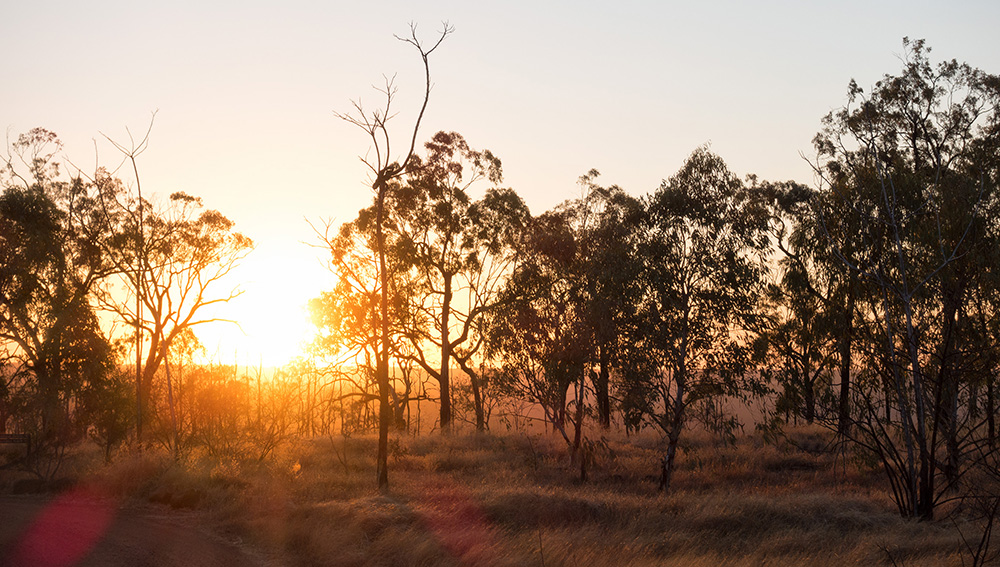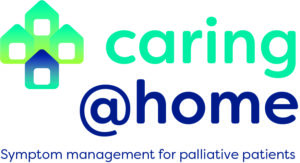Palliative care at home in the bush

If given the choice, most Australians with a life-limiting illness would prefer to be cared for, and to die at home. For people living in rural and remote locations, where a medical appointment may be a day’s drive away or more, being able to access and receive care while at home – surrounded by family, friends, and pets – can mean the world to them.
A nurse from South West Queensland recently shared a poignant story about a home-based patient she cared for using the caring@home package for carers. The patient’s family also graciously shared their experience.
 caring@home, a National Palliative Care Project led by Brisbane South Palliative Care Collaborative, provides resources for clinicians to train volunteer family members to help manage medicines that can help to control breakthrough symptoms in home-based palliative care patients. caring@home acknowledges the dedicated clinicians supporting patients and families through their end-of-life journeys, at what can be an extremely challenging time. As will be evidenced by the following two stories, palliative care really is more than you think.
caring@home, a National Palliative Care Project led by Brisbane South Palliative Care Collaborative, provides resources for clinicians to train volunteer family members to help manage medicines that can help to control breakthrough symptoms in home-based palliative care patients. caring@home acknowledges the dedicated clinicians supporting patients and families through their end-of-life journeys, at what can be an extremely challenging time. As will be evidenced by the following two stories, palliative care really is more than you think.
***************************************************
A story of patient-centered palliative care at home in rural Queensland
A letter by the patient’s son
Dear Jane,*
I wanted to write to thank you and tell others about our journey and experiences in caring for Dad at home in his last weeks.
When we got the news that dad only had weeks to live, reality quickly set in and dad decided this precious time would be better spent at home with his family and friends. As a family, we were all scared, not knowing what lay ahead. But we were lucky to have you, Jane, and Dad’s doctor; you were kind enough not to overwhelm us with information about what was happening to our father. You let us know in small doses, which gave us the confidence to continue caring for dad at home.
You organised equipment to help dad to remain comfortable. You helped us with advance care planning paperwork and getting things in order. The caring@home education we received from you, which enabled us to give medicines to dad, when he needed them, gave us the feeling of being able to help him when he needed it the most. This was very confronting at the time but rewarding at the same time. Doing all this at home meant we didn’t have to worry about him being alone in a hospital far away. I believe staying at home helped with dad’s mental health.
The morning of dad’s passing was one I will never forget. It was so sad, but also a relief that his suffering was over, and he was at peace. We knew that, as a family, we did everything we could to make Dad’s remaining weeks at home as comfortable as possible. Caring for him at home made us feel so empowered and incredibly proud. We could have only achieved this with the support of such a wonderful, caring, and experienced health team.
If there are family members who are in the same situation we were, please reassure them and tell them not to be scared of looking after a person who wants to die at home. It will be the most empowering job they will ever do.
Thank you and all the wonderful health team, for helping us care for dad.
Kind regards,
Stephen*
Through the eyes of the nurse
Peter*, a 70-year-old man from rural South West Queensland was referred to me after many months of unsuccessful cancer treatments and very long drives to and from hospital and medical appointments. Peter decided to receive palliative care at home.
Peter’s sons came home to help their dad and mum as it was evident that Peter only had weeks left to live. We discussed advance care planning. I educated the family about end-of-life care, cognitive and circulatory changes, pain management and what to do when Peter died. I arranged equipment for Peter's comfort. This was a very emotional time, but it enabled the family to freely ask questions and discuss distressing issues.
Peter was ‘admitted’ to hospital in the home, and a pain relief syringe driver was commenced. Because of the driving distances involved in visiting Peter, my colleagues and I came up with some innovative systems involving doctors, nurses, the family, telehealth and an iPad to enable us to safely deliver medicines, top up the syringe driver, fill in medication charts and accurately monitor Peter’s symptoms. Extra medicines for breakthrough symptoms were prepared using the caring@home package for carers. This is a valuable box containing teaching materials, labels for syringes, and a practice kit for nurses to teach carers to give subcutaneous medicines to a person being cared for at home. This became the daily routine until Peter passed away peacefully at home with his family around him.
This was such a beautiful experience for me, seeing a man being cared for at home by those who loved him.
His bed was in the loungeroom to enable him to see outside; he could listen to music; and he could watch his favourite movies. Throughout the journey, I watched Peter’s sons become more confident and empowered in caring for their father; the care they gave to him was truly second-to-none. The family were amazed at the support we were able to offer and said, ‘you wouldn’t get this in the city’. I was so proud that our little rural hospital could support this family to make a dying man’s wish to die at home come true.
*Names changed to ensure privacy.

